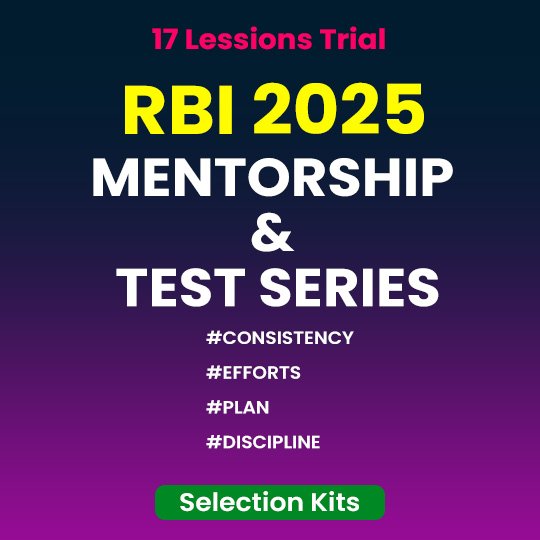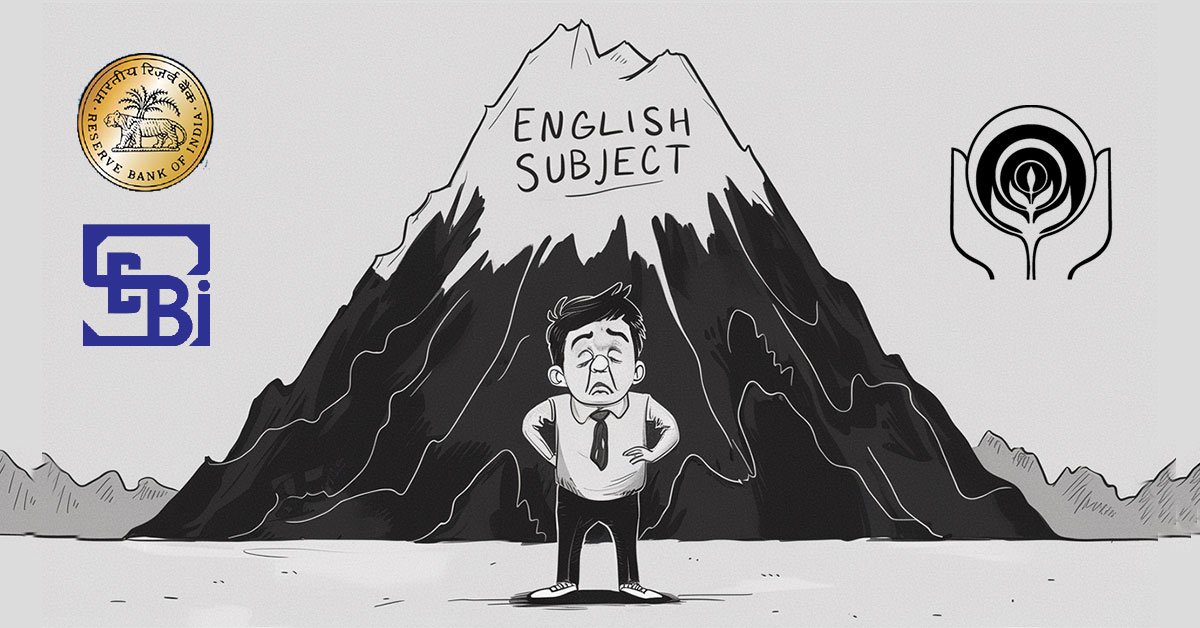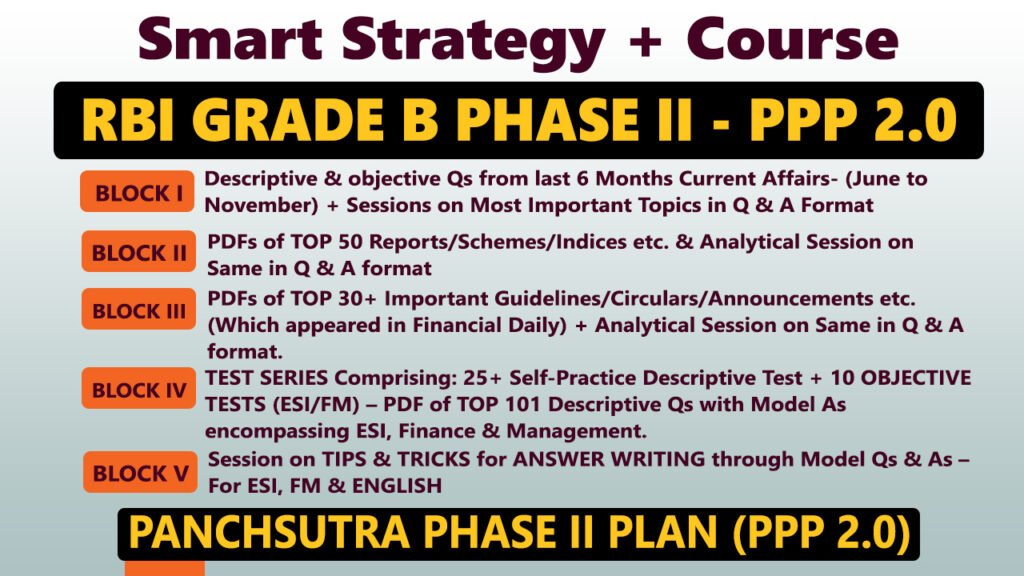Daily Current Affairs Quiz
28 June, 2025
National Affairs
1. India–U.S. Mini Trade Deal
Context:
Indian negotiators are in the U.S. to finalize a mini trade deal ahead of the July 8 deadline. The urgency stems from the expiration of a 90-day pause on U.S. tariffs—dubbed “Liberation Day” tariffs—set to resume on July 9 if no deal is reached.
Key Issues in Negotiation
- Tariff Threat: If no agreement is signed by July 8, Indian exports to the U.S. will face a 26% tariff starting July 9.
- U.S. Demands:
- Entry of Genetically Modified (GM) Crops into the Indian market.
- Export of Cow Milk and Dairy Products to India.
- India’s Concerns: India has longstanding regulatory and health concerns over GM foods and animal welfare issues related to dairy imports.
- Stalled Points: Removal of reciprocal tariffs remains unresolved, hindering the finalization of the agreement.
2. Global Sustainable Development Rankings
Context:
For the first time since the Sustainable Development Solutions Network (SDSN) began publishing the Sustainable Development Report in 2016, India has ranked among the top 100 countries, securing the 99th position out of 167 nations. This marks a significant milestone in India’s development journey, up from the 110th position in 2016.
- SDSN: An independent global initiative under the United Nations, focusing on the implementation of the UN Sustainable Development Goals (SDGs).
- The Sustainable Development Report assesses country-level progress across 17 SDGs using granular, comparable metrics.
Key Highlights of India’s Performance
- Improved Ranking:
- India climbed 11 ranks to reach 99 in 2025.
- The ranking improvement reflects advances in poverty reduction, infrastructure, and energy access.
- Strong Areas:
- Poverty Reduction (SDG 1):
- Poverty has nearly halved from 22% in 2012 (NSSO) to 12% in 2023 (World Bank).
- However, poverty data reliability is questioned due to outdated poverty lines and lack of post-2018 public consumption data.
- Energy Access (SDG 7):
- India has achieved near-universal electrification.
- Ranked 4th globally in renewable energy capacity, led by solar and wind power.
- Infrastructure & Digital Access (SDG 9):
- Growth in mobile connectivity and UPI-based digital payments has boosted financial inclusion.
- Poverty Reduction (SDG 1):
- Areas of Concern:
- Zero Hunger (SDG 2):
- Stunting remains high at 35.5%, barely improving from 38.4% (NFHS-4 to NFHS-5).
- Wasting declined modestly from 21.0% to 19.3%.
- Obesity in the 15–49 age group has nearly doubled, mostly in urban populations.
- Education (SDG 4):
- Internet inequality exposed during COVID-19 underscores a rural-urban digital divide affecting learning outcomes.
- Governance & Institutions (SDG 16):
- India lags in rule of law, press freedom, and institutional independence, with minimal improvement during the Modi years.
- Zero Hunger (SDG 2):
3. Uniform Renewable Energy Tariffs (URETs)
Context:
The central government is preparing to consult stakeholders on implementing Uniform Renewable Energy Tariffs (URETs) to streamline power procurement and tackle delays in Power Purchase Agreements (PPAs). The URET mechanism, proposed in October 2023, is yet to be implemented due to state-level resistance, as electricity is a concurrent subject under the Constitution.
Understanding Uniform Renewable Energy Tariff (URET)
The Uniform Renewable Energy Tariff (URET) refers to a standardized pricing mechanism for renewable energy within a region or jurisdiction. It is designed to bring uniformity, transparency, and efficiency to renewable energy procurement, especially in countries like India where tariff variability often leads to delays in Power Purchase Agreements (PPAs) and hesitancy among distribution companies (discoms).
Key Features of URET
1. Standardized Pricing Mechanism
- URET introduces a single, pooled tariff for renewable energy, eliminating project-specific or location-specific tariff disparities.
- The pooled tariff is computed by an implementing agency, such as the Grid Corporation of India Ltd, based on discovered tariffs from competitive bidding.
2. Consistency and Predictability
- Uniform tariffs provide pricing clarity to all stakeholders—generators, discoms, and investors—helping reduce risks in long-term planning.
- This uniformity supports better forecasting and budget planning for state utilities.
3. Boost to Renewable Energy Adoption
- A stable and transparent pricing environment encourages greater participation from developers.
- It mitigates delays in PPA signing by removing the “wait-and-watch” tendency of discoms expecting lower future tariffs.
Mint
4. Sugamya Bharat App
Context:
The Sugamya Bharat App, launched by the Department of Empowerment of Persons with Disabilities (DEPwD) under the Ministry of Social Justice and Empowerment, has been revamped to provide an improved user experience and more robust accessibility services for persons with disabilities (Divyangjan) and elderly citizens in India.
Key Features of the Revamped Sugamya Bharat App
- User-friendly interface for intuitive navigation.
- AI-powered chatbot to provide real-time assistance to users.
- Access to government circulars, notifications, and latest initiatives related to accessibility.
- Integration of government schemes and resources for Divyangjan.
- Users can report accessibility barriers through geo-tagged photos and descriptions.
5. Adi Karmyogi Programme
Context:
Union Minister for Tribal Affairs, Shri Jual Oram, launched the Adi Karmyogi Beta version at the closing session of a two-day conference organized by the Ministry of Tribal Affairs, aimed at advancing community-led, empathetic, and inclusive tribal development.
Key Highlights
Launch of ‘Adi Karmyogi’ Programme
- The Adi Karmyogi (Beta version) is a flagship capacity-building initiative designed to create a cadre of motivated and citizen-centric field officials.
- It targets the empowerment of 20 lakh stakeholders through:
- 180+ State Master Trainers
- 3,000 District Trainers
- 15,000 Block Trainers
- The goal is to transform governance in 1 lakh tribal villages and habitations.
Vision
- Shri Oram emphasized the need for empathetic governance, moving away from symbolic efforts to institutional transformation.
- The focus is on participatory planning, making tribal communities active stakeholders in governance.
Key Initiatives
- Startup Ecosystem for Tribal Entrepreneurs
- Explored innovative models to promote tribal entrepreneurship through incubation, market access, and capacity-building.
- Dharti Aaba Janjatiya Gram Utkarsh Abhiyan (DAJGUA)
- Discussions focused on integrated service delivery, last-mile outreach, and multi-departmental synergy.
- Strengthening Tribal Research Institutes (TRIs)
- Highlighted their role as policy think tanks, research centres, and ground-level support systems for implementation.
- Health and Sickle Cell Disease (SCD) Management
- Deliberations centred around the National Mission to Eliminate Sickle Cell Anaemia, including diagnostics, treatment, and awareness.
Banking/Finance
1. SEBI Regulatory Changes
Context:
Indian listed companies have significantly reduced share buybacks in 2025 due to a combination of taxation reforms and SEBI regulatory changes. As of June 26, 2025, only four buyback offers worth ₹186 crore have been recorded, compared to 38 buybacks totalling over ₹8,000 crore in the previous calendar year.
Key Factors Behind the Decline:
New Taxation Rule (Effective October 1, 2024):
- Earlier Regime: Companies paid a 20% buyback tax on the repurchase amount.
- New Regime: The tax burden has shifted to shareholders, who now must pay capital gains tax on income from buybacks, aligning it with dividend taxation.
- Impact: Shareholders now find buybacks less attractive due to higher post-tax returns on dividends.
What is a Buyback Tax?
Buyback tax is a type of tax imposed on companies that repurchase their own shares from shareholders. Governments typically levy this tax to discourage companies from distributing profits to shareholders through share buybacks instead of paying dividends.
SEBI Regulatory Reforms
- Phasing Out of Open Market Route:
- SEBI has eliminated the open market buyback route starting FY 2025.
- Companies are now allowed to conduct buybacks only through the tender offer route, which is costlier and more restrictive.
TH
2. DBS Bank India Waives Prepayment and Foreclosure Charges for UDYAM-Registered MSMEs
Context:
In a move aimed at easing credit access and enhancing cash flow flexibility for small businesses, DBS Bank India Ltd. (DBIL) has announced a complete waiver of prepayment and foreclosure charges for all MSME borrowers registered under UDYAM.
Key Highlights:
- Applicability:
- The waiver applies to both new and existing MSME borrowers.
- It is effective prospectively, meaning it will apply to loans prepaid or foreclosed after the announcement.
- Objective:
- To remove financial disincentives that prevent MSMEs from repaying early or refinancing.
- To support better cash flow management, especially during challenging economic cycles or rising interest rate regimes.
Significance for MSMEs
- Encourages financial flexibility without penalizing borrowers for early repayment.
- Empowers businesses to optimize credit costs and explore cheaper funding options.
- Complements government efforts to formalize and empower UDYAM-registered MSMEs.
About UDYAM
- UDYAM is the official government portal for MSME registration under the Ministry of MSME.
- It provides MSMEs with access to subsidies, financial support, and formal credit.
3. Pump and Dump Schemes
Context:
In a significant regulatory action to curb market manipulation, the Securities and Exchange Board of India (SEBI) announced on June 27, 2025, that it had conducted search and seizure operations across multiple locations earlier in the month related to pump and dump schemes in select scrips.
About Pump and Dump Schemes
A “pump and dump” scheme is a market manipulation tactic where fraudsters artificially inflate the price of a stock through misleading or false statements and then sell off their holdings at the inflated prices. This practice is illegal under SEBI’s Prohibition of Fraudulent and Unfair Trade Practices (PFUTP) Regulations in India and similar laws globally.
A pump and dump scheme involves artificially boosting (pumping) the price of a stock through misleading recommendations or information, then selling (dumping) the overvalued shares to retail investors, who suffer losses when prices collapse.
How a Pump and Dump Scheme Works
Pump Phase (Artificial Hype)
- Dissemination of False Information: Fraudsters spread misleading information—often online via emails, social media, WhatsApp groups, forums, or blogs—about a stock’s potential, claiming:
- “Insider tips”
- Major business developments
- Imminent acquisitions or partnerships
- Goal: Generate artificial buying interest and drive up the stock price and trading volume.
Dump Phase (Sudden Sell-Off)
- Selling by Promoters: Once the stock price rises due to the hype, manipulators sell off (dump) their large holdings at inflated prices.
- Investor Losses: As soon as selling pressure increases and promotional activity stops, the stock price crashes, leaving gullible investors with heavy losses.
Regulatory Perspective and Action (SEBI/Global)
- SEBI in India has launched search operations against pump-and-dump rackets (e.g., in June 2025).
- Enforcement tools include investigations, monetary penalties, trading bans, and criminal prosecution.
- Globally, regulators like the SEC (U.S.) and FCA (U.K.) have similar mechanisms to curb such frauds.
4. RBI Issues Final Guidelines for KYC and Due Diligence of AePS Operators
Context:
The Reserve Bank of India (RBI) on June 28, 2025, released final guidelines for due diligence and onboarding of Aadhaar Enabled Payment System (AePS) Touchpoint Operators (ATOs). The move is aimed at strengthening fraud risk management, improving accountability, and ensuring compliance with KYC norms. The guidelines will come into force from January 1, 2026.
Key Provisions of the RBI Guidelines:
Mandatory Due Diligence by Acquiring Banks
- Banks must conduct KYC and due diligence on all AePS Touchpoint Operators before onboarding them.
- The process must comply with RBI’s Master Direction on Know Your Customer (KYC).
Inactivity Rule
- If an ATO is inactive for 3 consecutive months (i.e., no financial or non-financial AePS transactions), the bank must re-verify KYC before reactivating them.
Existing KYC Validity
- If the ATO’s due diligence has already been completed in another role, such as a Business Correspondent (BC) or sub-agent, the same KYC records may be reused.
Ongoing KYC Compliance
- Acquiring banks must periodically update the KYC records of all onboarded ATOs to maintain data integrity and reduce fraud risks.
Significance of the Move:
- Enhances user trust in AePS-based services, especially in rural and semi-urban areas.
- Strengthens fraud prevention and detection by ensuring ATOs are continuously monitored.
- Creates a standardized compliance framework across banks and payment operators.
What is AePS?
- The Aadhaar Enabled Payment System allows customers to perform banking transactions such as cash withdrawals, balance inquiries, and fund transfers using Aadhaar authentication at micro-ATM or banking correspondent touchpoints.
5. Pradhan Mantri Jeevan Jyoti Bima Yojana (PMJJBY)
Context:
The Union Finance Ministry is working on a proposal to revamp the Pradhan Mantri Jeevan Jyoti Bima Yojana (PMJJBY) by doubling the life insurance coverage and revising the annual premium structure, in a bid to boost insurance penetration and long-term scheme sustainability.
The Pradhan Mantri Jeevan Jyoti Bima Yojana (PMJJBY)
The Pradhan Mantri Jeevan Jyoti Bima Yojana (PMJJBY) is a crucial initiative by the Government of India that aims to provide affordable life insurance coverage to the masses, particularly the economically weaker sections. Launched in 2015, PMJJBY is one of the key pillars under the umbrella of Jan Suraksha Yojana, ensuring that every citizen, irrespective of income, has access to life insurance coverage.
- Launch Date:
- 9th May, 2015
- Ministry:
- Ministry of Finance
Features of PMJJBY
The scheme offers several attractive features that make it simple, efficient, and accessible:
- Affordable Premium:
- ₹436 per annum per member.
- Substantial Coverage:
- ₹2 lakh life insurance cover.
- Universal Access:
- Available to all Indian citizens aged 18–50 with a bank account.
- Automatic Renewal:
- Auto-debit facility from the bank ensures yearly renewal.
- Comprehensive Coverage:
- Covers death due to any cause, including natural and accidental.
- Simple Enrollment:
- Minimal paperwork and easy onboarding through banks.
6. SEBI Revises Related Party Transactions (RPTs) Disclosure Norms
Context:
SEBI has updated its minimum disclosure requirements for the approval of related party transactions by audit committees and shareholders. The revised norms are a result of consultations with industry bodies including Assocham, FICCI, and CII.
Related party transactions (RPTs)
Related party transactions (RPTs) are business deals between a company and its related parties, such as directors, key managers, or their family members. These transactions can involve sales, purchases, loans, or service agreements and are subject to specific regulations due to the potential for conflicts of interest. Transparency and proper disclosure are crucial to avoid issues related to fairness and potential financial implications.
Key Revisions:
- Certification Requirement Expanded:
- Now, Managing Directors (MDs), Whole-Time Directors, or Managers may also certify that an RPT is in the best interest of the listed company, in addition to the CEO or CFO.
- Certificate Content Standardized:
- SEBI has detailed the mandatory contents of the certificate to improve uniformity and accountability.
- Enhanced Information to Audit Committees:
- Disclosure of:
- All transactions undertaken with the related party in the current financial year
- Defaults made by the related party in the previous financial year
- Previous transactions, relationship nature, and ownership structure of the related party
- Additional disclosures in case of royalty payments
- Disclosure of:
- Audit Committee Oversight:
- The committee may seek additional documents (e.g., valuation reports).
- It must record rationale and comments for approval or rejection of RPTs in meeting minutes.
Objective
To enhance transparency, prevent abuse by promoters, and improve investor protection, especially in firms where promoters or executive directors may have conflicts of interest.
7. Business Correspondents
Context:
Business Correspondents (BCs), critical to financial inclusion in rural India, have approached the Ministry of Finance (MoF) seeking resolution over stagnant remuneration structures, especially as banks intensify deposit mobilization efforts amid falling credit-deposit (CD) ratios.
Business Correspondent (BC)
A Business Correspondent (BC) is a representative of the bank, who offers banking services to people in the unorganized sectors. BCs are an important constituent of financial inclusion, which means making banking accessible to everyone.
- What does a BC do?
- Open a person’s bank account, Process a loan application, Deposit money and withdraw money, and many other financial services.
- How does a BC function?
- BCs make use of the mobile phone in the facilitation of the services provided by a bank
- A customer may make a transaction after he/she makes an electronic signature and/or thumb impression.
- For each transaction the BC completes, it is compensated.
- Why do BCs matter?
- BCs can facilitate a bank’s penetration of previously unreachable locations.
- BCs enable low-cost delivery of banking services.
Issues in Business Correspondent (BC)
- Static Commission Rates:
- The BC profitability gets impacted, mainly in rural and semi-urban areas.
- High Attrition:
- BCs have a very high attrition rate due to low commissions and operational demands.
- Limited Value-Added Services:
- BCs operate mostly on cash-in, cash-out operations and get limited training to offer more financial products.
Capacity-Building and Governance
- Need better training of the field staff and development of a larger pool of skilled trainers.
- Increase in Digital Banking Units (DBUs)
8. Finance Minister Urges PSBs to Boost Lending
Context:
On June 28, Finance Minister Nirmala Sitharaman met with the heads of Public Sector Banks (PSBs) to review their financial performance and direct them to capitalize on the RBI’s recent 50 basis points rate cut to drive credit growth and enhance financial inclusion.
Key Highlights
Push to Boost Credit Growth Post Rate Cut
- RBI’s repo rate was reduced by 50 basis points to 5.5% on June 6, 2025, led by Governor Sanjay Malhotra.
- Sitharaman urged PSBs to ensure increased lending to productive sectors, especially MSMEs, agriculture, and infrastructure.
- Target: Maintain or exceed FY25 credit growth levels in FY26.
Focus on Financial Inclusion & Government Schemes
- Banks were directed to onboard more customers into flagship government schemes:
- Pradhan Mantri Jeevan Jyoti Bima Yojana (PMJJBY)
- Pradhan Mantri Suraksha Bima Yojana (PMSBY)
- Atal Pension Yojana (APY)
- Kisan Credit Card (KCC)
- PM MUDRA Yojana
- The FM emphasized greater coverage in rural and underserved geographies.
Strengthening Deposit Base
- PSBs were advised to mobilize more low-cost deposits to improve Net Interest Margins (NIMs), especially through:
- Financial literacy campaigns
- Savings-linked government schemes
- Business Correspondents (BCs) and digital onboarding
Asset Quality and NPA Management
- FM appreciated the low levels of NPAs in FY25 and stressed continuity in maintaining asset quality through strong risk management practices.
Agriculture
1. Statistical Report on Value of Output from Agriculture and Allied Sectors (2011-12 to 2023-24)
Context:
The National Statistical Office (NSO) under the Ministry of Statistics and Programme Implementation (MoSPI) released its comprehensive annual publication on “Value of Output from Agriculture and Allied Sectors (2011–12 to 2023–24)” on June 28, 2025. The report provides detailed estimates at both current and constant (2011–12) prices across crop, livestock, forestry, and fishing & aquaculture sectors.

Key Highlights:
Overall Agricultural Growth
- Gross Value Added (GVA) at current prices grew by 225%, from ₹1,502 thousand crore in 2011–12 to ₹4,878 thousand crore in 2023–24.
- Gross Value of Output (GVO) at constant prices grew 54.6%, from ₹1,908 thousand crore to ₹2,949 thousand crore.
Crop Sector
- Crop sector remains the largest contributor to agricultural GVO with ₹1,595 thousand crore in 2023–24, forming 54.1% of total GVO.
- Cereals and fruits & vegetables together contribute 52.5% of total crop output.
Cereal Output and State Contributions
- Paddy and wheat alone account for ~85% of the cereal GVO.
- Top 5 states (Uttar Pradesh, Madhya Pradesh, Punjab, Telangana, Haryana) contribute 53% of total cereal GVO.
- Uttar Pradesh retained the top spot despite its share declining from 18.6% (2011–12) to 17.2% (2023–24).
Fruits, Vegetables, and Floriculture Trends
- Banana (₹47,000 Cr) overtook mango (₹46,100 Cr) in fruit GVO in 2023–24.
- Potato remained the top vegetable crop with GVO rising from ₹21,300 Cr to ₹37,200 Cr.
- Floriculture nearly doubled in value—from ₹17,400 Cr to ₹28,100 Cr—indicating diversification into commercial horticulture.
Regional Production Shifts
- Shifting contributions from different states in fruits, vegetables, and floriculture sectors reflect changing regional strengths and cropping patterns.
Condiments and Spices
- Madhya Pradesh became the leading state with 19.2% share in GVO of condiments and spices.
- Karnataka (16.6%) and Gujarat (15.5%) followed closely.
Livestock Sector
- Livestock GVO surged from ₹488k Cr (2011–12) to ₹919k Cr (2023–24).
- Milk continues to dominate with a slightly reduced share (67.2% → 65.9%), while meat increased from 19.7% to 24.1%.
Forestry and Logging
- Forestry GVO grew from ₹149k Cr to ₹227k Cr.
- Industrial wood’s share rose significantly from 49.9% to 70.2%, highlighting increased commercial exploitation.
Fisheries and Aquaculture
- Fisheries’ share in agricultural GVO increased from 4.2% to 7.0%.
- Marine fish output rose to 49.8%, surpassing inland fish which dropped to 50.2%.
- West Bengal and Andhra Pradesh saw notable shifts in fisheries output rankings.
Facts To Remember
1. Kerala’s Western Ghats Now Home To India’s First Butterfly Sanctuary: Details Inside
The Western Ghats, a haven for trekkers and nature enthusiasts, has long been a magnet for travellers seeking solace in its lush green landscapes and misty mountains. Tucked away in this breathtaking stretch now lies a butterfly sanctuary that’s just waiting to be discovered
2. Govt urges state-run banks to boost lending amid economic growth push
India’s finance ministry has asked state-run banks to step up lending after the Reserve Bank of India’s outsized interest rate cut earlier this month, a top government official said on Friday, a move aimed at bolstering economic growth.
3. Starlink to Soon Get Regulator’s Final Approval for India Entry
US satcom major Starlink is set to clear the final regulatory requirement for offering services in India with space regulator IN-SPACe issuing a draft document for signing to the Elon Musk-owned company, people aware of the details told ET .



















